Going Loco, down in Kyoto!
Ok, so, we’ve stayed in a hotel or two, probably more than 40 in the last 2 months. For weird checkins the Japanning Hotel Nishiojii takes the biccie. We first need to make our way to the “Hotel Office” this seems to be located a floor or two above a “Craft Beer and Pizza” emporium......and I’m off alchohol!!
Arrived at the office, there’s no “here’s your key sir, please have a pleasant stay” Oh no, we get “Here’s two codes, one gets you through the external doors, input the other 5 digit code to the number lock, this will generate a 4 digit code which when input will unlock the door.
“Ok, I think we understand”.
“Ok now you need to return to Kyoto station and take a train to Nishiojii station”
"We what now?”
Turns out the room is a couple of miles from the centre of Kyoto. We have a general whinge and they agree to shuttle us to the rooms.
After a nice coffee at a nearby cafe we get the shuttle, walk a few blocks to a building that resembles the picture of the “hotel” we’ve booked, input the 2x 4 digit codes and one 5 digit code and get in. It’s lovely! Extremely compact, but with kitchenette, space age loo and a couple of beds, wall sized TV it’s impecably clean and has free laundry facilities in a utility area outside.
Kit dumped we walk to Nishiojii station and get the train back to Kyoto. In fairness Nishiojii is a really nice little area, mostly residential, half a dozen pleasant looking eateries and the station a two track affair that gets us back to the fleshpots of Kyoto in 10 minutes flat.
Two and a half hours later we’re outside of a wonderful 3 course Vietnamese meal of Pho, Miso, Curries and tea and falling swiftly in love with Kyoto.
The plan is to see as much as possible in every city. Seeing everything in Kyoto in 3 days isn’t feasible but we set out on our temple-athon as early as we can get out the door. It’s a Sunday and our first choice is utterly rammed.
Fushimi Inari Taisha is extremely popular, more than 1000 Tori gates (The red jobbies you’ll have seen, two large red poles bisected by a shaped red cross beam) mark a pilgrimage trail through a number of temples to a mountain top viewing area.
To be honest the crowd is so huge we give it up after the first 4 levels and make our way back down the hill. On the way we pass a long alleyway of street food outlets. Small scaffolded enclosures covered in cloths or tarpaulines selling all kinds of food, barbequed broiled, boiled, fried. Amongst them something of a local delicacy, and one I’d promised myself I might try, until I see them.
Barbequed sparrows are prepared whole, something I’d not prepared myself for to be honest, you get 3 to a stick and there they are, plucked, marinaded, wing stubs outstretched little head and beak bent upwards as if awaiting a worm.
I’m not sure what I expected, but now I expect when I eat one and the little skull pops I’ll probably hurl my breakfast banana half way back to Tokyo. On top of this I can’t get tomorrow morning out of my head when presumably I’ll poop something akin to an owl pellet.
I scrub round the sparrow and Kim and I share a pork skewer. Back on the train and off to Arashiyama and the world famous (it says here) Togetsukyo bridge. Arashiyama, on top of the bridge itself, houses a further two unesco world heritage sites in temples and gardens.
The place is stunning. Off the train we grab a coffee at a place that looks as if it’s been here at least 300 years, most of them with the same two staff it would appear, and plan our day.
The walk to the bridge is crammed, it’s huge timber span crosses the Katsura river. Wide and shallow flowing here, cranes fish among the rocks. Just above the bridge the cream of Japans’ youth tries to impress their girlfriends by continually rowing around 250 small rowboats into the sides of packed punted cruise boats. Everywhere are acer trees, bright yellows, scarlet weeping leaves, the colours are just astounding.
Across the river a forest of trees coloured from bright gold to scarlet rise up a sheer hill. From the river a walkway between groves of the trees leads to Tenryuji temple (Unesco...yada yada yada) which is in a stunning setting.
There’s a preserved street here. Japan as it was in the 17th century and we make our way there, it’s a steep climb through bamboo forest and as we climb we slowly leave the crowds behind. The street becomes one of timber and bamboo shop fronted homes with wonderful sculpted rock gardens with trained pines and acer.
Adashino nembutsu shi is a small temple at the top of the hill, a stiff-ish 40 minute clamber. It’s a temple dedicated to lost souls, departed but with no family to mourn them. Each year the local priests hold a ceremony lighting a candle for each of the 8,000 stone budhas housed here in honour of the lost souls. A lovely ceremony by all accounts and a beautiful setting among more multi colored acers waterfalls and twinkling streams.
If I become a lost soul, you may find me here!
Kim and I love Bath. In particular when we’re there, we enjoy going to the hot spa. A fantastic modern building using the thermal springs of the city to heat a swimming pool, a number of steam and sauna rooms and most fun of all, the roof top spa. It’s among the top 5 of fun things you can do with some clothes on. A guilty part of the pleasure is to go there in November-February so that you can watch the effects on bikini clad girls as they emerge from the steaming hot roof top pool into the frosty winter air.
On I think the 2nd or 3rd floor are the steam and sauna rooms and the rainfall showers (almost equally good fun!) The steam rooms are glass walled and roofed and looking in, all you can see are clouds of steam, condensation trickling down the walls.
On Kyoto station concourse there are a number of smoker pods which remind e of nothing so much as the steam rooms at Thermae. It’s difficult to make out the people inside so thick is the smoke trapped inside the glass cubicle. They must be smoked as kippers in there! I doubt it’s necessary to actually buy fags should you want to kill yourself that way. I’m sure just standing in the Kyoto smokers box would do it for you and leave a much better inheritance for the kids.
Nijo castle is, as you have probably guessed, a Unesco world heritage site! It’s an extraordinary building. The gardens are simply stunning and the castle itself is really quite magnificent. The walking tour takes you past all of the official rooms where the last Shoguns held sway, receiving visitors, gifts, deciding fates. The walls of each room designed in the main to intimidate and ensure visitors appreciated the power of their host.
Beautifully realised Pines, birds, hawks eagles and the like line each room with of course the obligatory tigers.
Ever wondered why tigers in ancient and traditional japanese art look kind of, odd? Well, there are no Tigers in Japan. The strength and fierceness of Tigers were legendary via tales from travelers to India, never having seen one, artists in japan were forced to “imagin-eer” them from skins and skeletons. Hence the rather squash faced, mouth full of front teeth appearance of traditional Japanese tigers and lions.
My favourite feature of the castle are the “Nightingale floors” when you walk the corridors it sounds for all the world as if a cage full of songbirds are singing. The official explanation is that over the 300 odd years since they were constructed the bolts and floor timbers used have worn such that the floor flexes and the wood and metal interacting make the birdsong noise.
My preference is for the legend. The nightingales sing to warn the shogun enemies are approaching.
Actually I’m reminded of the huge sums of money I expended on consultants in my previous life trying to discover and rectify the cause of noisy floors in new built homes. If I’d just had the brains to explain
“they’re like that so that rent officers or the police can’t sneak up on you”,
I may have got away with it. After a really full day we’re looking for something to eat. Kyoto is rammed full so we head back to Nishiojii. In the UK and probably throughout Europe we’re maybe used to walking a line of restaurants trying to make up our minds which one suits us.
The process is complicated here by the fact that we can’t read a word of japanese, so we’re reliant on either pictures or little plastic models of the foodstuff on offer and trying to ensure that nothing in the picture\model that we take for “a nice bit of beef” is actually the insides of a goat that has been decomposing inside a dead camel for 3 weeks served with a sauce made from the swim bladder of a whale shark.
A further complication here is that, with space at a premium, rather than being next to each other, the restraunts are piled one on top of the other. So a single unit wide space will house, at the ground floor, a small restraunt or bar and a number of menu boards for anything up to a dozen eateries, each (hopefully) indicating the floor it’s on, plus an elevator.
You punch the floor number into the elevator and it disgorges direct into the lobby of your chosen (or otherwise) nosh house where you’re asked “how many”.
On a number of occasions now we’ve ended up in entirely the wrong place but so far without international incident.
Today is one of these. We spend the usual 3 hours “discussing” which food emporium to frequent, the fish place looks good. We jump in the lift, punch in the floor number, the doors open and a bloke in a blood stained black samuria suit complete with sweat band bows us in.
So happy does he appear to be to see us and so deep the bow we don’t have the heart to back out and let him lead us to a booth.
From this point on we now take photos of the menu board we want and show it to whoever greets us as the lift doors open. “Is this here?” we ask, like visitors from another dimension.
Anyway, sat down we’re brought a menu with not a word of english but mercifully furnished with pictures. It appears to be a barbeque place (Lovely) but there’s a diagram of a chicken, like we’re used to seeing in the uk in butchers shops, explaining which cut comes from where, Sirloin, fillet etc
With not a word of english on it, some of the arrows point dangerously close to the bottom end, and areas that are clearly gizzard, feet, and heart.
The waiters when they come to the table react well to our newly aquired japanese skills “Omizu kudasai” (water please) but everything in the place is testosterone fuelled. When they understand what we say, they repeat it followed by a loud “HAI!” as if they’d just chopped a cinder block in half with a single blow from the side of their hand. The water arrives....
“Omizu......HAI!”
To my delight there are sausages on the menu, you can’t mistake them, god knows what’s in them but hey, what’s new? We’ll have some of those.
“Sausages....HAI!”
Chicken skewers look good, but we can’t get him to understand that we want to avoid “Certain parts” he just keeps on with the ...
“Chicken....HAI!”
We commence a prolonged series of elaborate mimes, all in order to make clear that we want no tubes, loops, ring pieces, beaks, hearts, gizzard or toe nails.
Have you ever tried to mime “No chicken ring pieces please?”
After 20 minutes that I’m sure were emotionally exhausting for us all, our waiter backs away, bows and says...
“Chicken....HAI!!”
In fairness it’s all delicious, accompanied by a number of japanese sauces, phials of differently roasted pepper (A big thing here) a variety of sausages and skewers arrive one of which our waiter mimes is made of a complete chicken, minced, mixed with egg and shaped onto bamboo skewers.
Look, it tasted pretty good and 4 out of five ain’t bad! So pleased are we with dinner that we learn the Japanese for that was delicious.
"Oishitakka desu"
When we tell our waiter, so pleased is he that he goes to get the manager so we can repeat it.
We are bowed to the lobby to pay our bill, bowed to the elevator, as we look back at the closing elevator doors our waiter and the manager shout
"HAI!!!!”
and go into deep bows which they maintain until we can see them no more.
The Basho Street Kids
We’re off to Fukuoka in Kyushu, and in truth don’t really know what to expect. Another wonderful Shinkansen ride drops us a metro ride from our hotel and we plunge into the streets to try and find the bloody place. It’s not easy! It’s almost impossible to get our bearings when we emerge from the underground. The downtown of Fukuoka, Tenjin, wraps around an island in a river and most roads cross the river onto and off of the island which houses a notorious red light district and, as it turns out, our hotel.
It’s actually a very nice place and once settled in we tramp out the door and into the claustrophobic back streets, past the girlie bars and “Love hotels” where you can rent a room by the hour. “Got any by the minute?” I ask.
At the far end of the island from us (about a 20 minute walk) is Canal City. A modern shopping and entertainment complex, all neon, searchlights and, with Christmas approaching, a billion fairy lights. Canal city is famous for it’s fountain displays. The complex bends around a series of pools in which dazzling displays of fountain-ship are enacted to music on the half hour. Tonight the Christmas display is being premiered.
Opposite where we stand, across the pool, is a 7 storey glass building, as the time approaches, blinds slide down all of the windows to form a huge projection screen, as sleigh bells jingle, and the fountains, coloured by submerged lamps and roof top spotlights start to dance, a silhouette of santa’s sleigh glides across the front of the building, turns toward us so we can all wave at rudolph, he loops the loop, disappears over the roof top and we’re treated to a little cameo as santa flies across the world delivering pressies.
A huge fan of water lit by lazers and a barrage of fire crackers heralds the arrival of a (the) real live santa who dances, and directs the lights and fountains in a dazzling display accompanied by a huge, fake snow blizzard while the fountains shoot the full 7 storey height of the buildings opposite accompanied by fire crackers as a climax.
Santa leaves the stage as we stand in the snow storm. Kitsch, corny, camp, bloody wonderful!
Do you ever have the feeling you’re seeing or experiencing something that’s either already from, or destined soon to be from, another time?
I recall the first time I heard the music of Robert Johnson. A scratchy 33rpm from the oxfam store in Havant. A thin wavery voice, sounding as if it was coming down a phone line from another time. I recall lines like “Blues falling down like hail” and “when I’m dead and gone, bury my body by the railroad line, so my restless spirit can hop a freight train.....and ride!” Dear god, it’s no wonder it changed my life! An aimless 13 year old with no interest in anything apart from girls, of whom I was petrified, I was begging for guitar lessons within a week, which got me an aim and girls! Job done!!
The next time I recall listening to him was when I’d just acquired, a newly re-mastered to cd version of the same album. It was winter, dark, Kim was out, I put the CD in the slot, sat in an arm chair with a large malt whiskey, the only light, from the fire, casting shadows on the walls. That reedy voice now sounded more than ever as if it was being sent from another time, the subject matter of another age, a time capsule.
Likewise in Cochin Kim and I spent an afternoon spellbound by Kathcalli, a traditional form of Indian theatre. Reliant on the memorising of thousands of hand gestures and intricate facial expressions, the dedication of the actors to learn the art is staggering, years of practice are required before they can approach a stage, decades to perfect the art. Such requirements are leading to its’ demise as an art form in the modern world and we were struck with how we were witnessing a dying art form, something from another time.
Fukuoka is famous for the last Basho of the year held in early winter. I didn’t think we’d have a hope in hell of getting in but we make our way to the city stadium. Out of the crowds at the door emerges a young woman, she has an arm band with “English” written on it. Within 15 minutes we’re off to find lunch, we have a couple of hours before the Sumo starts.
Sumo has had a tough time apparently, there have been match fixing scandals, the utter dedication, not to mention reduced life expectancy of the wrestlers and the reduced awe in which they are held due to the scandals is making recruitment tough. The time taken over the pre-ambles, delaying the action, but integral to the art form, at odds with a world that seeks instant gratification. After a wonderful lunch down by the fish market of mackerel and local pork delicacies, with miso, wasabi and teryaki sauces ....
"Oishikatta desu"
We make our way to our seats for a spellbinding afternoon and evening.
We can’t help but think that we’re again witnessing something which may soon-ish be consigned to history or a side show.
The elaborate ceremony of each bout, centred around respect not just for the opponent but for the “art” itself, the cleansing of the arena with salt, the clapping and stamping to scare off evil spirits already seem at odds with the modern world.
In the guide books the suggestion is that this, the last Basho of the season will be sold out months in advance apart from a few tickets released on the day at 07:30. We’ve strolled up at 10:45 and got tickets with no problem. As we sit with our hot roast chestnut pasties for the later session when the elite fighters turn up we can still see seats around the place presumably un sold.
For all of that it’s a fantastic spectacle. The fighters are very big units! At the elite end of the bouts they are simply huge. The judging ceremonies, the elaborate costume and posturing of the referee is a joy. The fights themselves, lasting from a few seconds to a minute or two are surprisingly explosuvely violent when witnessed up close and personal. When these guys launch themselves at each other they resemble bull elephant seals, pitting every ounce of their substantial selves to the battle without holding back in the least. The blows they rain on upper torsos resound about the ring, one guy hits the floor so hard the raised dias on which they fight, made of clay and sand, collapses. We spend the following week keeping up with the competition on TV so complete is the spell it has cast on us.
Play up Pompei!
Each city we visit in Japan impresses us more than the last. Kagoshima maintains the record. It may be that we’re getting used to the travel, the hustle and bustle of the stations becoming less stressful, our ability to find our way around slowly improving. Whichever way you cut it, Kagoshima is a delight.
We step out of our latest Shinkansen train after a journey deep into Kyushu, cross the station, go through our ritual, book the seats for the next leg, hit tourist information, get a map, what’s the city transport? Metro? Bus?..... Oh, it’s trams.
Kagoshima has a beautiful layout, everything within a walk, and once we’ve dropped our luggage at the hotel we dive straight into the streets aiming for a local temple complex.
The scale of everything here is nice and manageable, the temple, discreet, perfect, set into rocks and a hillside, overgrown with multi coloured mosses it looks as if it’s grown rather than been built.
From here we have a 30 minute walk through what is a lovely town to the waterfront where looming over us is one of the worlds most active volcanos. We knew it was here, we just didn’t expect it to be so huge and dominant. It is vast! And today (and for the next day as well) it has a bit of a grumble on. Huge billows of smoke are rising from the crater and (thankfully) blowing away from us. It’s difficult to take your eyes off it, it’s so remarkable a sight.
We find a place near the ocean front with coffee and a view directly across the bay and just drink it in.
There’s a pretty unique set of restaurants here. Tiny places, little more than a domestic kitchen with a 3 sided counter with seating for 8 customers sitting at bar stools, maximum. There are 25 or so of these places in a little rabbit warren of streets entirely devoted to eating and drinking at these places.
The idea is of course that each specialises in something or other, eel, the famous local black pork, Kobe beef, fish, sushi, sashimi, terryaki, and so on. You can spend your evening in one or have some fish here, some pork there etc and work around a few places. The atmosphere inside these little cubby holes is wonderful.
Despite our language limitations, real efforts are made to welcome us. Some guys next to us in one place are passed a small gas cooker, once lit they pile a pot of stock with veggies chicken and what have you (Shabu Shabu it’s called here) and insist on helping Kim and I to some, we again practice our Japanese for “Thank you, that was delicious”
"Oishitakka desu"
We get some smoked fish, fried herring, then some stewed local pork and Soy marinaded ribs. Wow! Fantsatic.
One local delicasy we decide to pass on is sashimi chicken. While not quite raw, it's briefly charred on the outside leaving the inside raw, and I mean raw. The claim is that like sashimi fish the chicken is so fresh it needn't be cooked at all and is simply charred for the flavour. We watch a couple devouring te stuff, legs and all, pink sinews hanging off the bones but can't bring ourselves to try it.
Despite this I unfortunately wash my meal down with a local green tea which has a similar effect to raw chicken. It goes, as they say, through me like a dose of salts. I’m extremely grateful for the round of applause feature in the public lavatory!
The 40 minute walk along the coast to Sengan-en the next day has it’s moments. We happen upon a craft market, mostly food, and the stall holders are amazingly generous. We have a wonderful soup of veggies and smoked bacon “forced” on us, some exquisite locally smoked ham and sausage. In fact we’re pretty energised for the rest of the walk.
Sengan -en is a very old Shogun home (17th century) it is one of the more staggeringly beautiful places i have ever seen. The gardens, designed in intricate detail using the bay and volcano as “borrowed” back drop are just amazing. The gardens are flwlessly designed and the displays of chysanthemums and Bonsai are wonderful.
We get lunch in a beautiful restaurant in the grounds, we have a staggering view from the 2nd floor across the gardens to the bay and the volcano and enjoy sashimi herring arranged to resemble the petals of a chrysanthemum, and 2 dishes featuring the local speciality black pork.
"Oishitaka desu" we say.
This is met with such delight that I start to have misgivings, are we pronouncing it right? what if, instead of complimenting them on the flavour of the meal we're saying something else, say asking for a soapy tit wank? I check....
"Seffen hokuku onani". I store this one away as you never know when I may need it, but grateful to know that we're safe with Oishitaka desu.
The service is flawlessly delivered by imaculately, traditionally dressed staff and complete with green tea I'm somewhat stunned to check our credit card statement to find the whole shebang cost around 18 quid.
We spend the whole day at wonderful Sengan en, the place is such a picture. Evening and Kagoshima is now in full on christmas mode. The lights are very beautiful and of couyrse thoughts start to stray to home until Kim insists we go on a huge ferris wheel located on the roof (10 storeys) of the station/mall complex. Pretty soon I'm regretting the sashimi herring, but in truth the city looks wonderful from up here.
Hiroshima
I'm not sure what we expected from Japan, scenery wise. I suppose we thought views from the train would all feature a back drop like Fuji, while happy peasants worked in the foreground in a landscape full of pagodas and skies full of cranes. Actually it's a pretty industrialised place, particularly along the rail lines except where the train needs to head inland to cross from one side of the country to the other, everything gets mountainous pretty quick and at this time of year, wearing their Autumn colours the mountains look very spectacular indeed.
The cities look pretty plain, with housing arranged alongside industry in what looks a pretty much utilitarian fashion. Not a lot of high rise generally, outside of major cities. Wide spread out conaubations seems to be the order of the day. When you get to Hiroshima this all falls into place. How do you come back from having two atomic bombs dropped on your country?
Hisoshima and a visit to the peace park has to have an effect on your view as to the use of nuclear weapons. The indiscriminate slaughter of 140,000 men women and children with a single weapon is a ghastly thing to consider, and I wonder how hard our governments had to work to de-humanise the Japanese in order to get us to condone it. Of course, speaking from a vantage point 70 odd years distant from war it's easy to be smart, but to see the devastation here.
A visit to the Peace Park is by turns a harrowing and intensley moving experience. I'm still struggling to link our experience of Japanese people with that of the image I have taken on board from years of exposure to The Bridge on The River Kwai and the like. Coming to Hiroshima and witnessing the testimonies of survivors from the day simple strengthens the similarities between us and the japanese. Were it not for the horrendous scale these could be East End mums or dads talking about their children, husbands, wives, parents and the like. ...
"I went into my childrens room, they were both dead, laying exactly as I had left them the previous night, my memory is of how the buttons of their night clothes had melted into their bodies, my husband laid down on our bed the next night and never got up again......we were such a happy family until that day"
"My mother went searching for my 6 year old brother, for 2 days she searched in the ruins, until she came across some one she knew, he said he had seen my brother the day before, he was dressed in rags and asking for cool water. My mother searched every day for a long time but never found him. Until the day she died she visited our family shrine and left a change of clothes and a cup of cool water."
Is our main view of the japanese based on war time attrocities in order to help bind us into this, it's ok we'll never use it first, it's just a deterrent against baddies (So if we use one...they failed??) world order we've had since the 40s?
The most chilling stuff here are the discussion documents pre the attacks. A number of targets were picked in part based on topography in order to "maximise blast damage". I mean, women and children in a city and we're "maximising blast damage", did we really need to do that?. There were potentially 3 targets on the day and Horoshima got unlucky due to clear skies on the day.
I have always been of the opinion (told) that the bombs were used to avoid the casualties likeley from a land invasion. Apparently the big fear was that Russia was preparing to invade Japan unilaterally potentially giving them Pacific stronghold America couldn't live with. Worse still, Japan knowing of a potential invasion had started peace talks with Russia. The potential of such an alliance was an even bigger issue for America, there was a real liklihood of this happening, particularly as the Russians had little issue with Japan maintaining an empirical leadership, a real sticking point for Japan, and an offer oddly missing from the Allied ultimatum delivered before the attack.
I suppose now the big threat is from terrorism, I mean how long is it before an ISIS or whatever get a nuclear weapon? who do we fire our detterent at? or a rogue state, are we really going to commit nuclear genocide upon a people via a missile from a submarine somewhere because their leadership is made up of nutters? Today is one of those days I'm glad I'm wandering bum and not a world leader.
There are some pictures in the Peace museum, painted by childeren who survived the attacks of their memories. A few are very striking in their similarities. They're of people, their knecks craned up and back, mouths wide open, the pose looks quite alien. It seems that black dust and ash rose so high in the atmosphere, that water vapour collected around it and it fell to earth as a black rain, on people horrifically burned, parched by the heat of the explosion and the following fire storm, desparate for any water even this deadly rain was welcome.
Finally there's a photo of the steps outside a bank, someone had been sat there in the morning sunshine waiting for the bank to open at 9am. His or her shadow (He or she was instantly vapourised) is burned onto the white concrete. Families from all over Hiroshima, to this day, claim that he or She may be their lost relative such is their desire to be able to have that closure. It's good to know they weren't all guards at Tenko.
I don't know about you but I could use some light relief after that lot. Assuming a Seffen hokuku onnani is out of the question I'll tell you about Miyajima. Miyajima is a magical island just off the coast at Hiroshima and we can take a boat trip their from tyhe centre of town so, off we go.
The island is famous for both its' stunning "floating" Tori gate. (actually it hardly floats, stuffed full of 700 tons of fist sized rocks it relies on its' own weight to stay rooted upright)and the fact that the local deer population is so used to people they wander freely through the town and local parks and will happily walk alongside you or pose for pictures. The island at this time of year is gob smackingly beautiful packed as it is with Acer and maple all in full fall glory. The fact that they are posed, along with sculpted and wild pine, over and around beautiful temple buildings does it no harm whatsoever.
While we're here we decide to partake of a local speciality, Okonomiyaki. We've actually had Okonomiyaki a couple of times in Tokyo and Kyoto without realising it was either Okonomiyaki or a speciality but, apparently here in Hiroshima it's elevated to a near art form. Okonomiyaki is, how can I put it, japanese for bubble and squeak with the odd Asian refinement.
So, here we are in a Okonomiyaki restaurant. Stools, belly up to a long bar, the top side of which, bar the wooden eating surface right in front of us, is a long steel griddle, running the length of the bar. Half a dozen cooks are the other side cooking the constituent parts of Okonomiyaki.
To the far left, someone ladles a pancake batter onto the griddle, with the back of the ladle he swirls it into a wafer thin round pancake. Next to him stands someone watching over piles of cabbage sitting on the griddle, on top of each heap, 3 or 4 slices of pork or bacon, periodically these little heaps are covered with a domed pot top to help broil the meat.
Next we have some one watching over piles of noodles, they're being stir fried on the griddle top, squirted with soy and teriyaki sauce, turned, chopped, turned again, the place is starting to smell deliscious! Just above the pancakes now oysters, shrimp, clams, and scallops have been popped on the gridle surface with a squirt of sake they're turned on the griddle, covered and steamed.
Finally eggs are cracked onto the griddle, swirled with chopsticks and just before they're set, the pancake goes on the cabbage and pork pile, is pressed down with aspatula, the whole thing is picked up and placed on the noodles, seasoned, that's then picked up and placed on the egg, that's all picked up and flipped (the tough bit!) so that the not quite cooked yet egg, can run through the noodles and cabbage binding it all together, the whole thing is then flipped onto a plate, chopped into six and your choice of seafood, oysters, shrimp, scallops whatever is piled down the middle.
The whole thing is then topped with raw scallions, a thick coating of terryaki and you can dig in. In Tokyo a refinement has emerged and a lattice of mayoniase is drawn across the top and a chopstick run across it to draw the spider web patterns you sometimes see on cake glazing.
We resist this in Hiroshima, but the couple next to us have bought their own Mayo so they can add it to the Hiroshima version such is the allegiance to the practice, the cooks seem amused.
I'm here to tell you, it is a wonderful thing, with or without the mayo!!
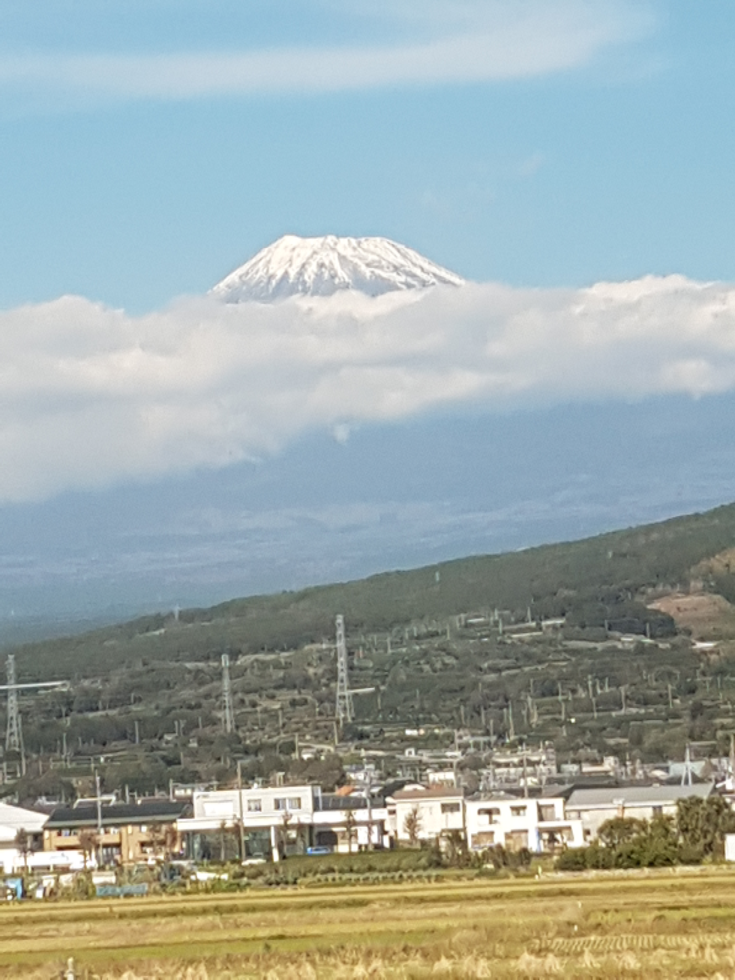
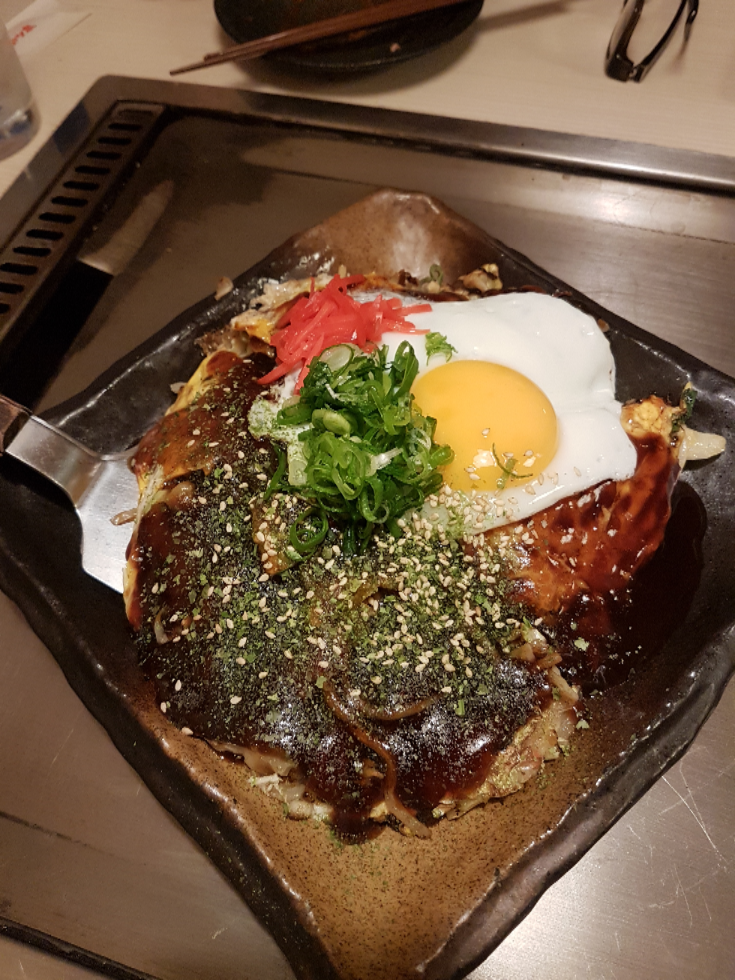
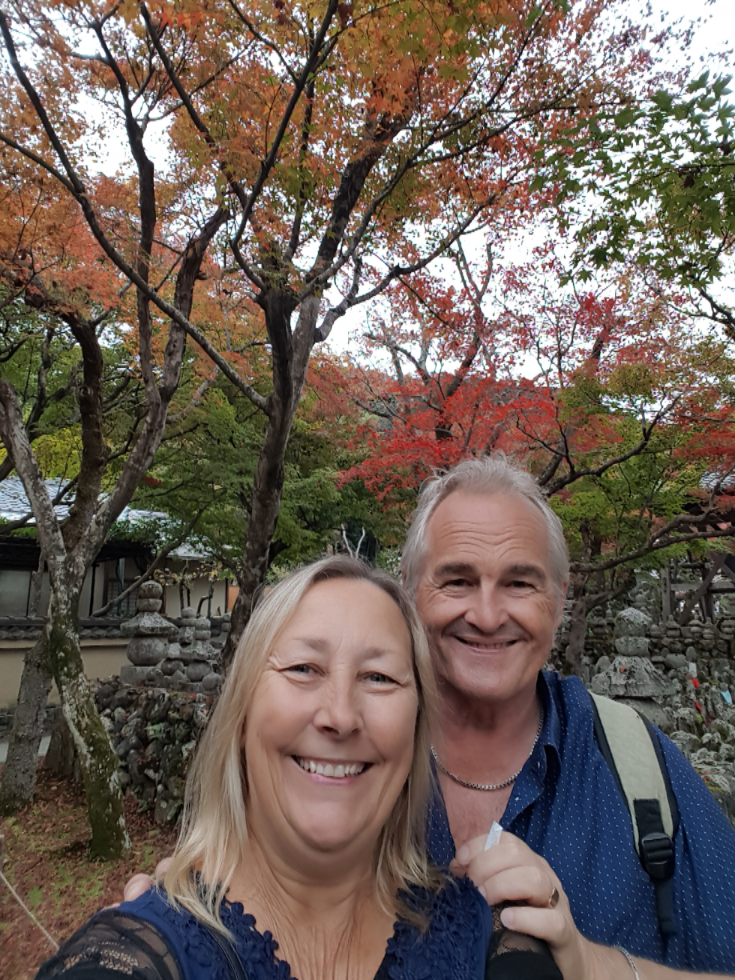
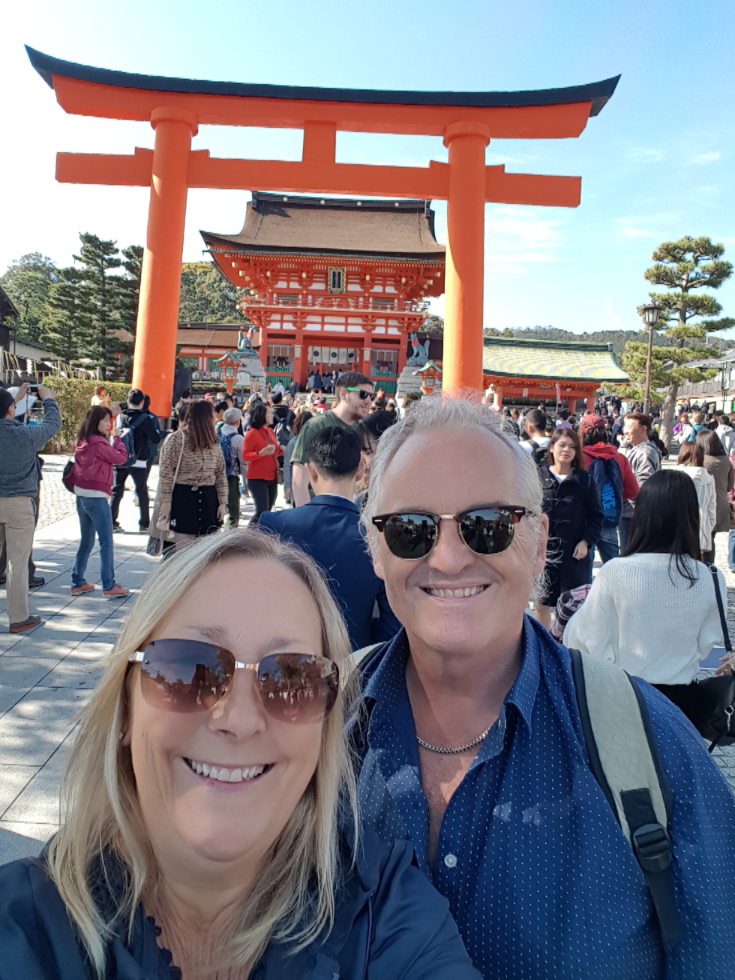
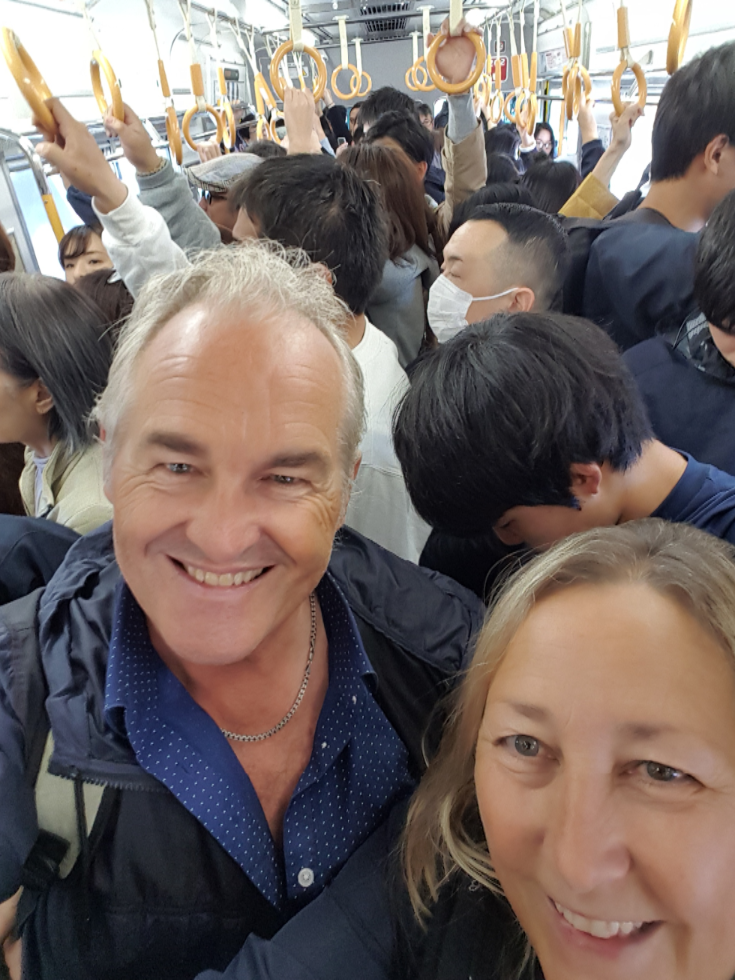
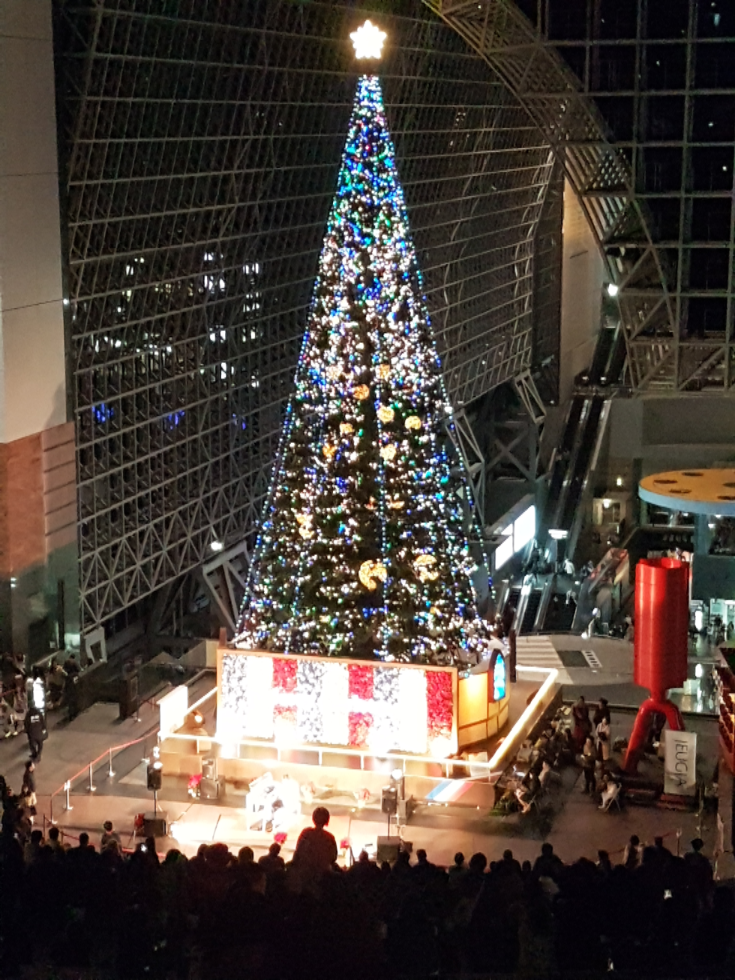
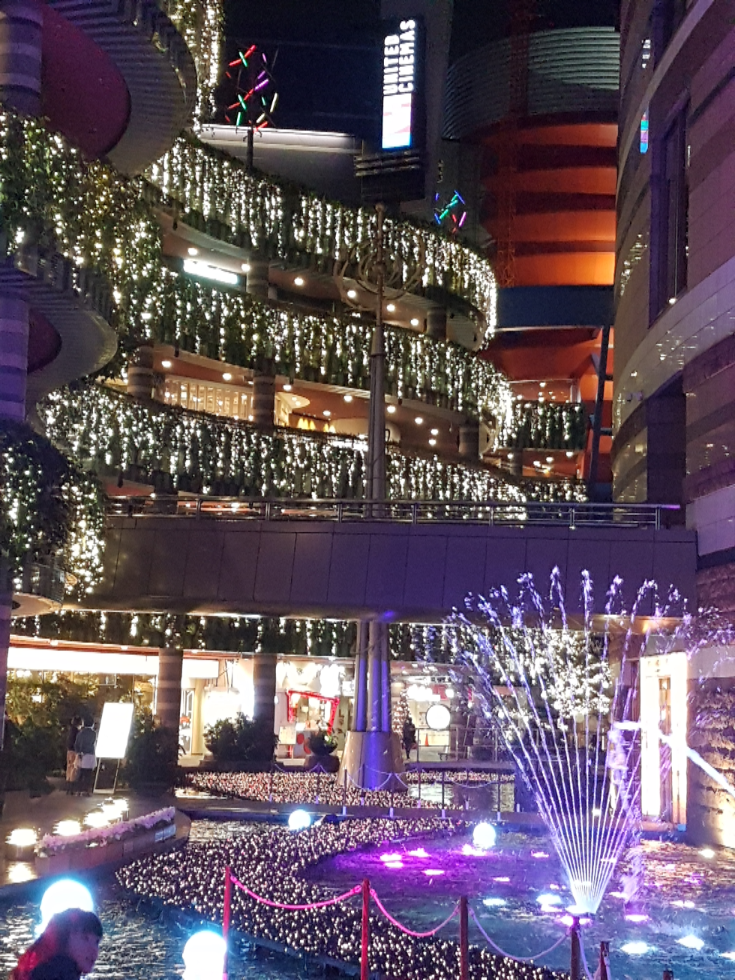
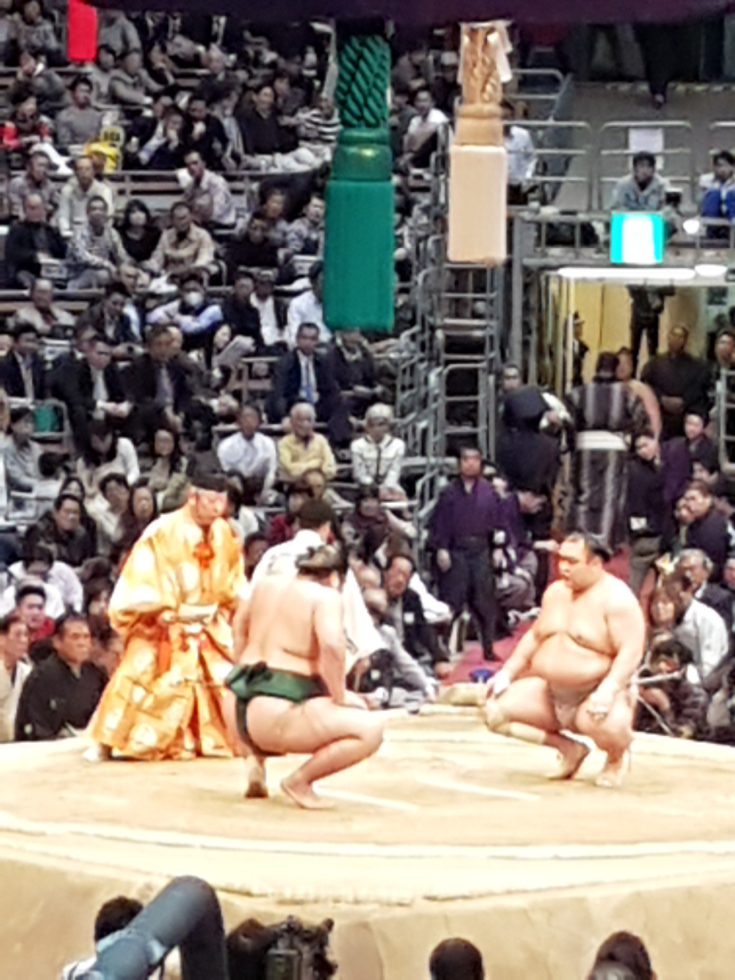
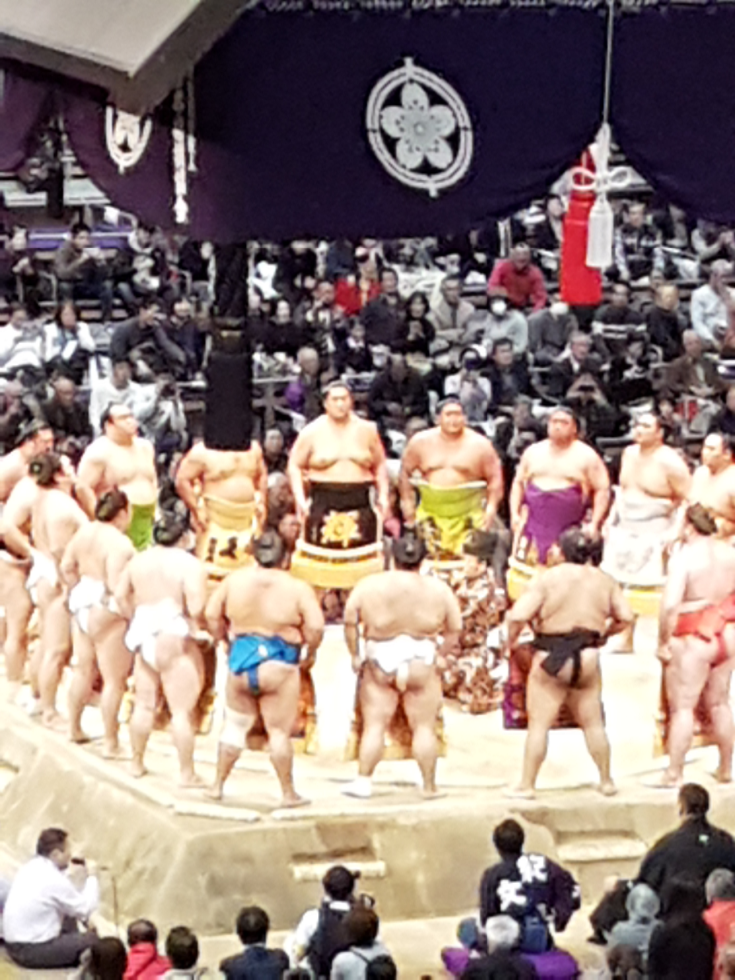
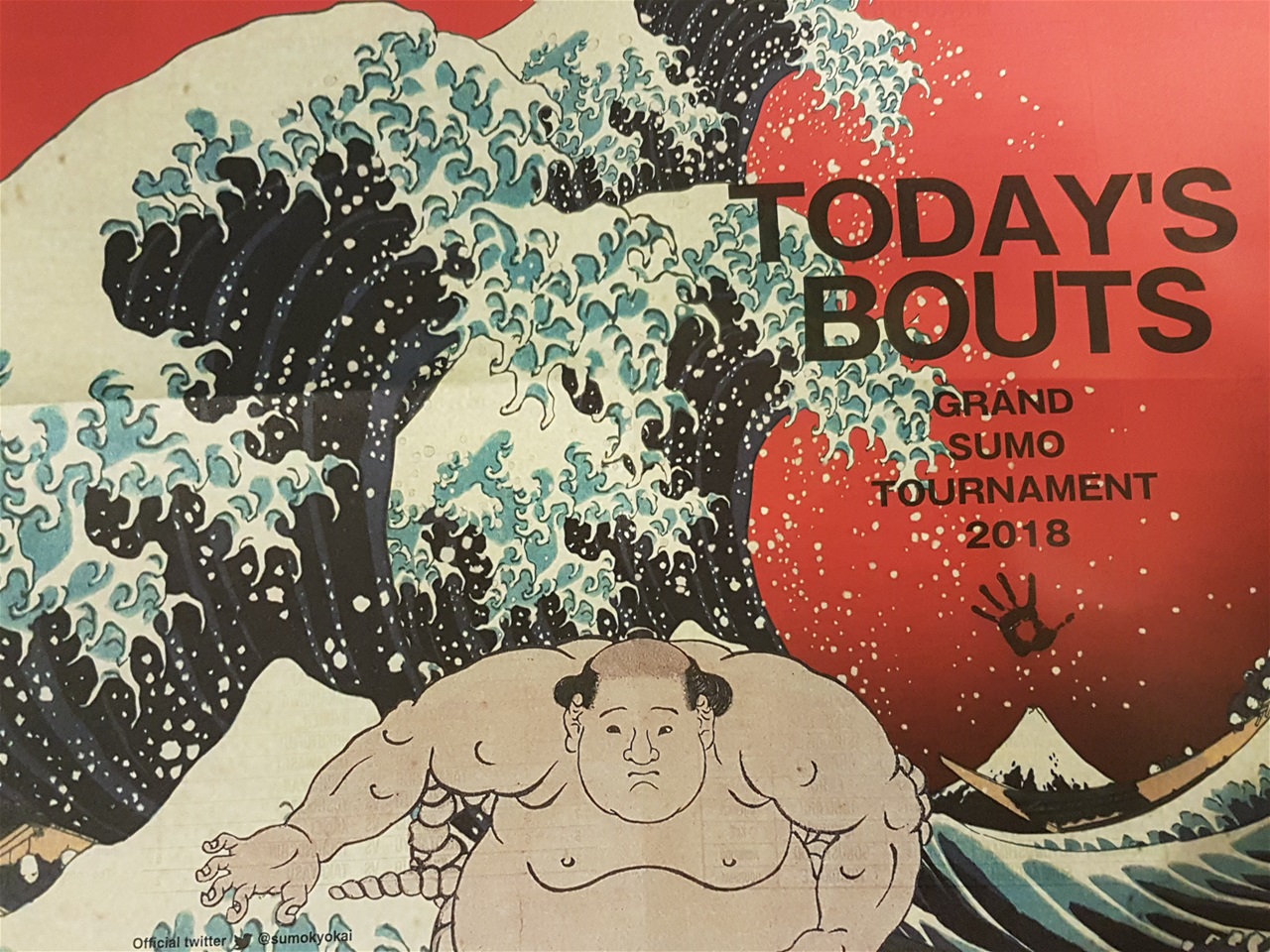
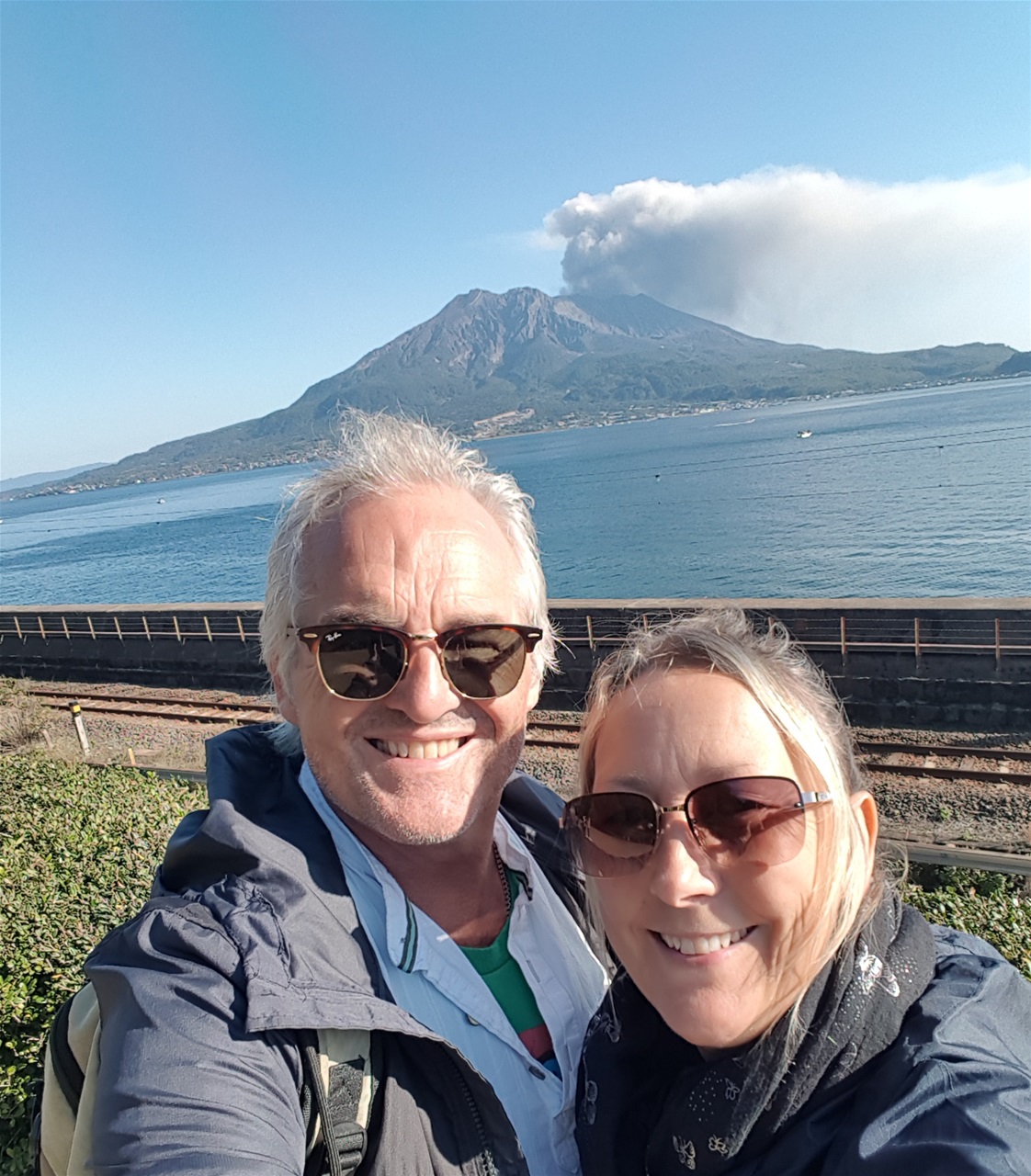
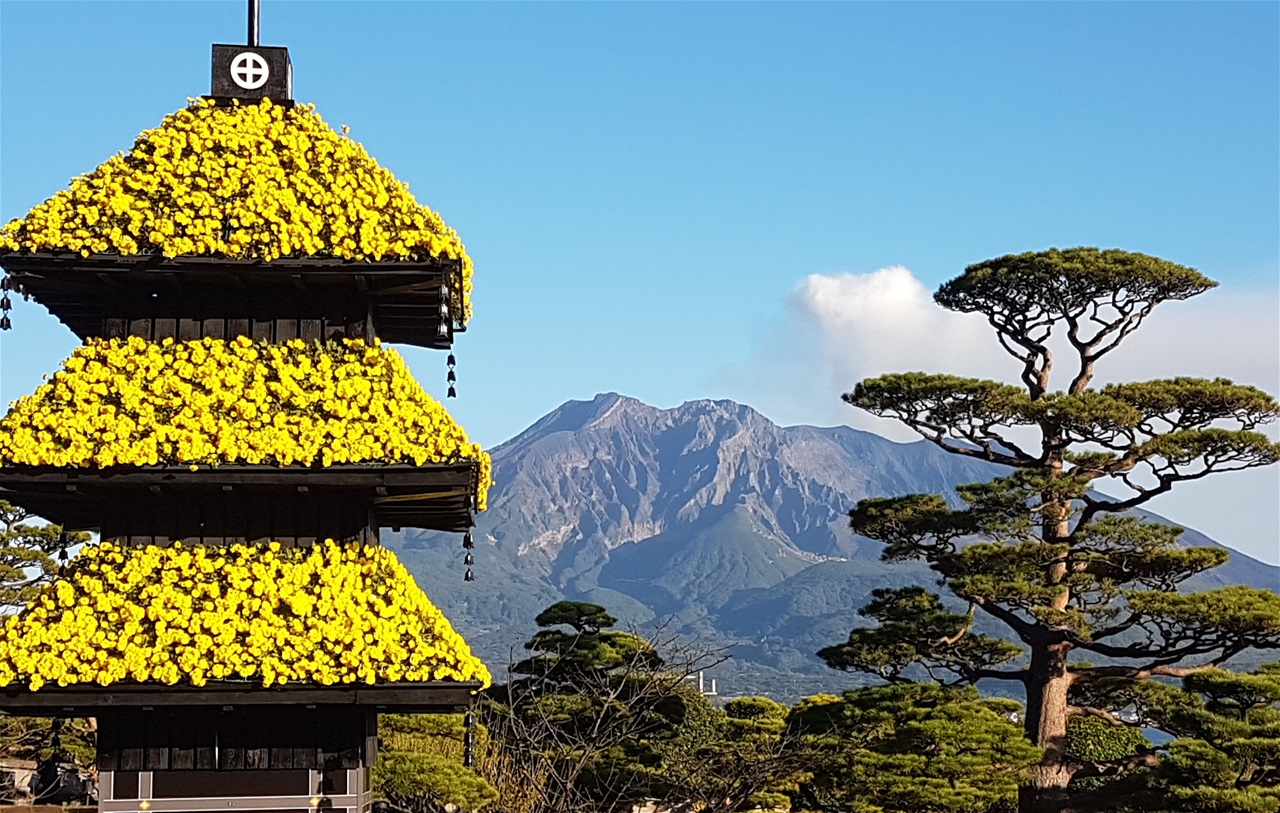
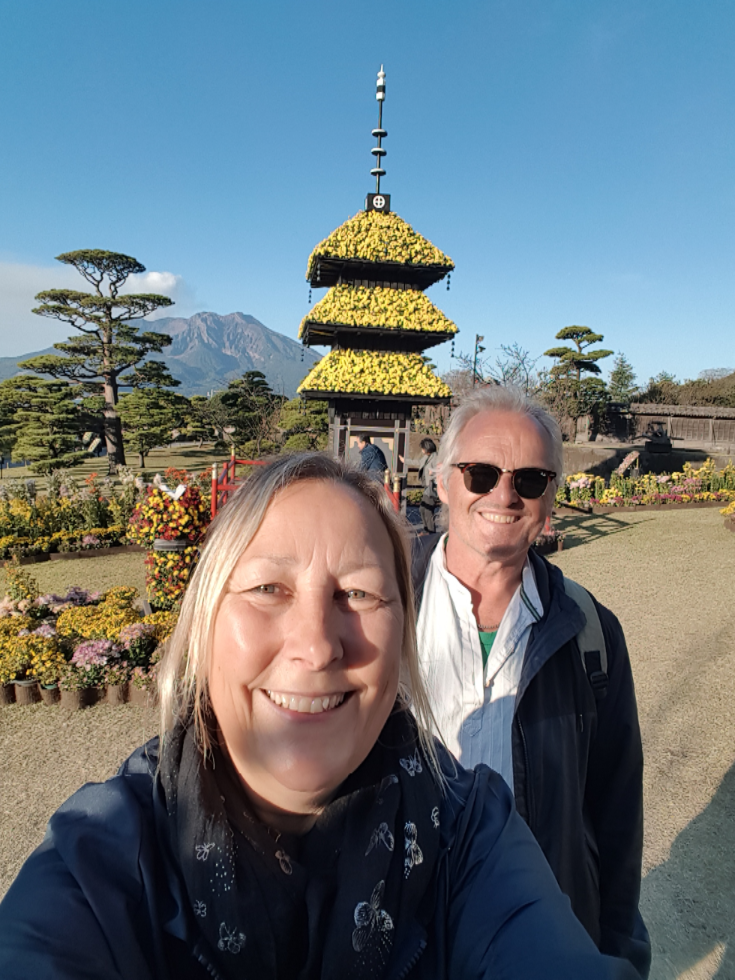
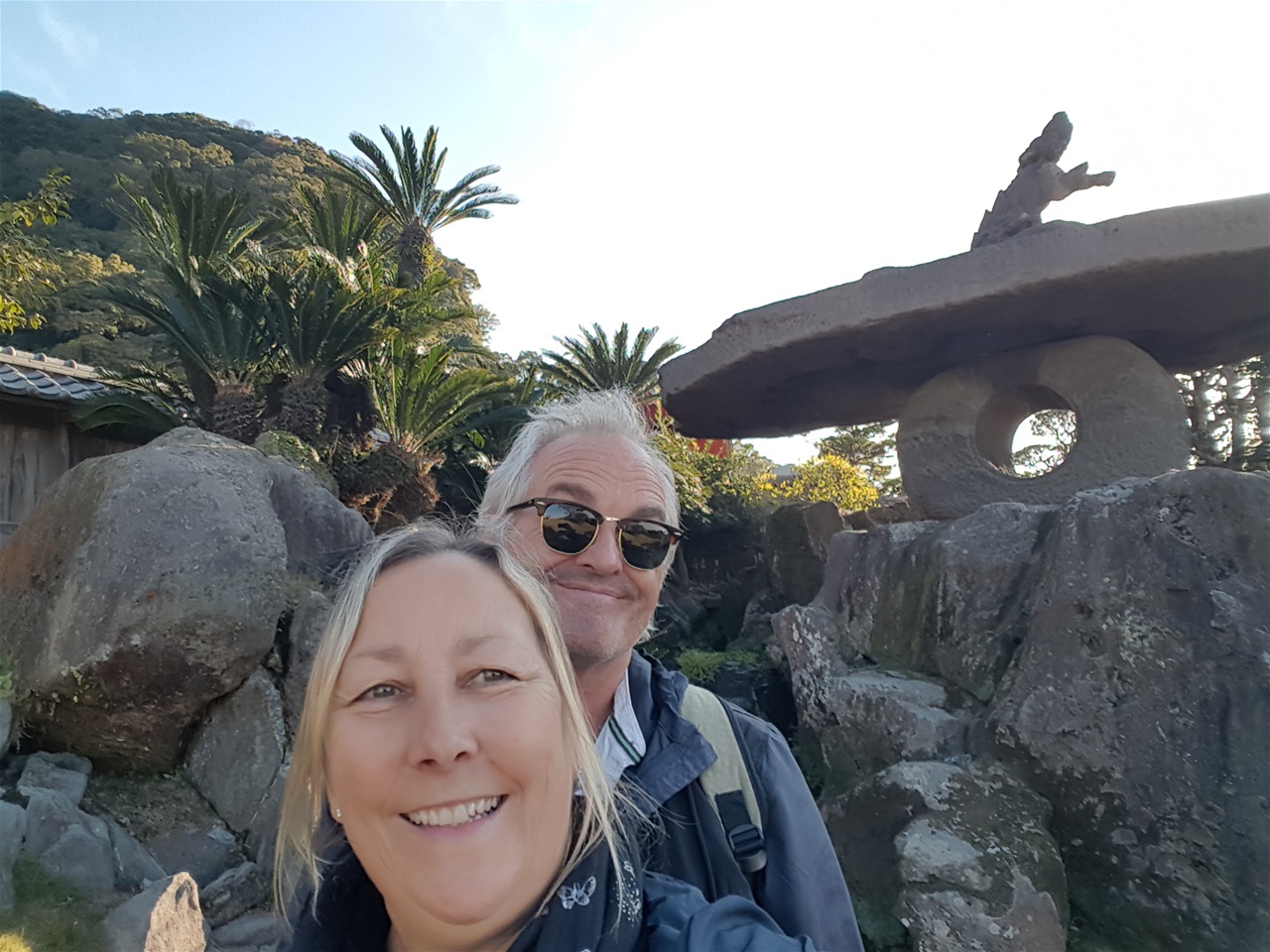
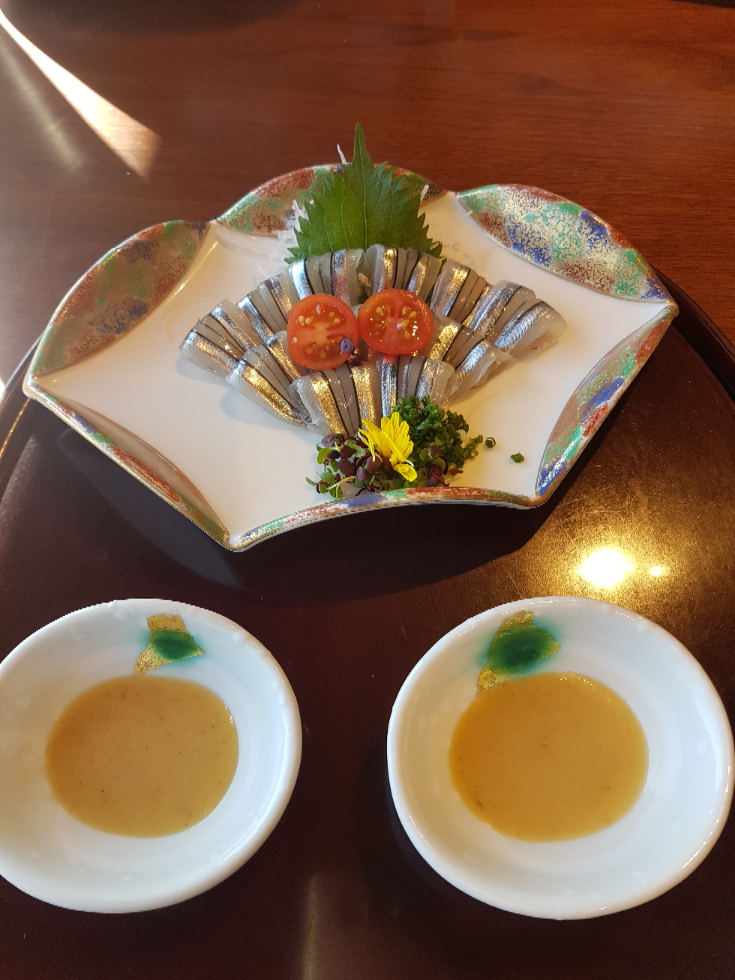
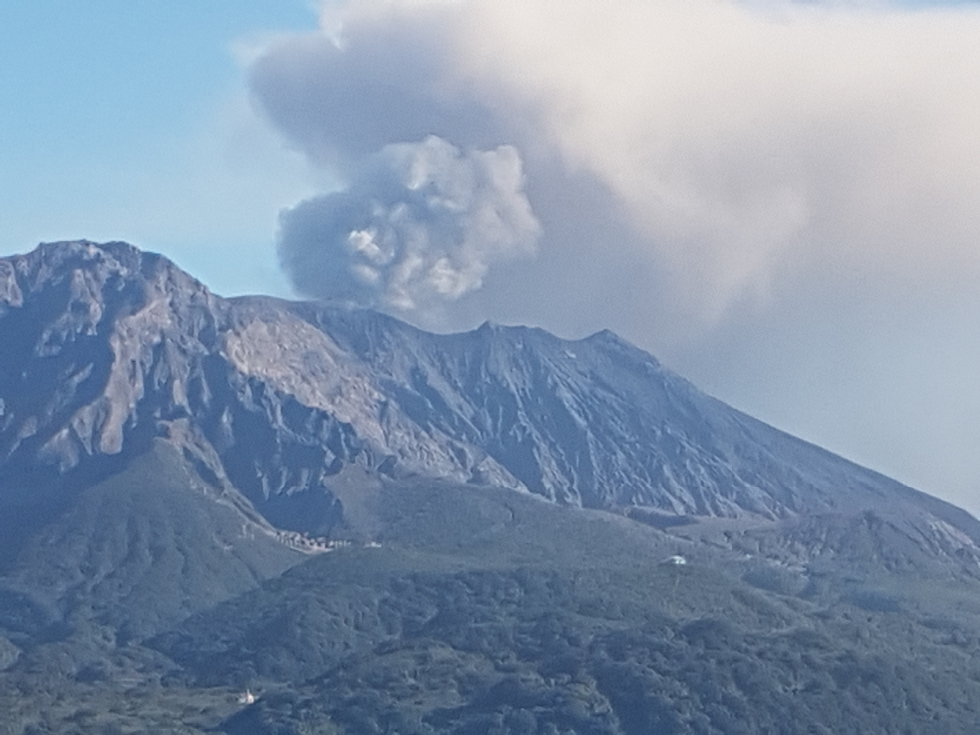
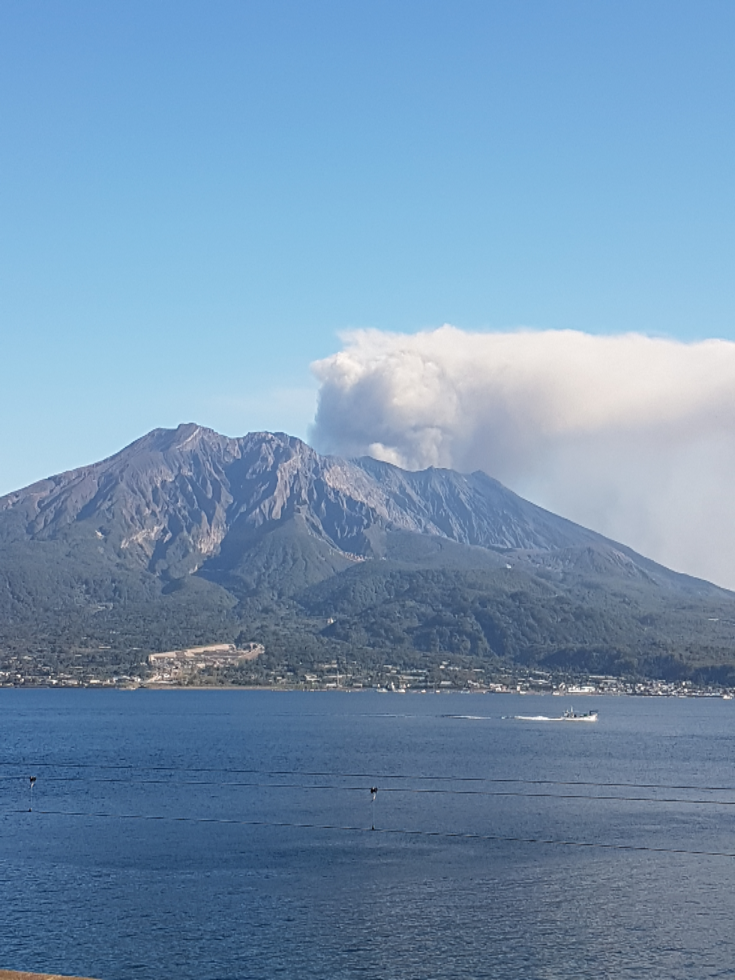
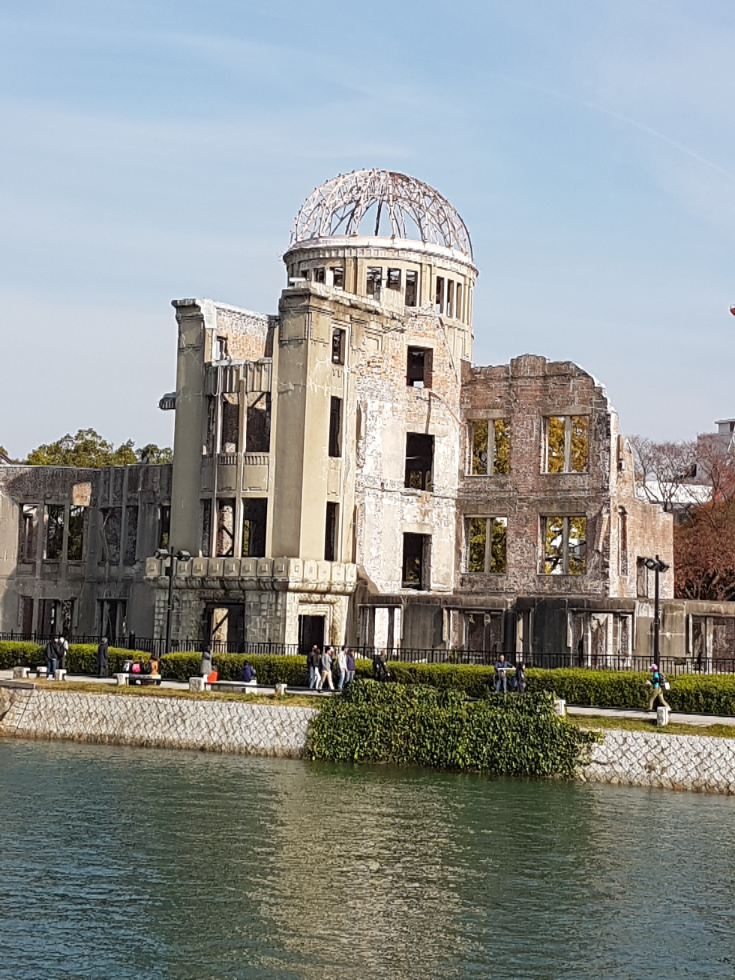
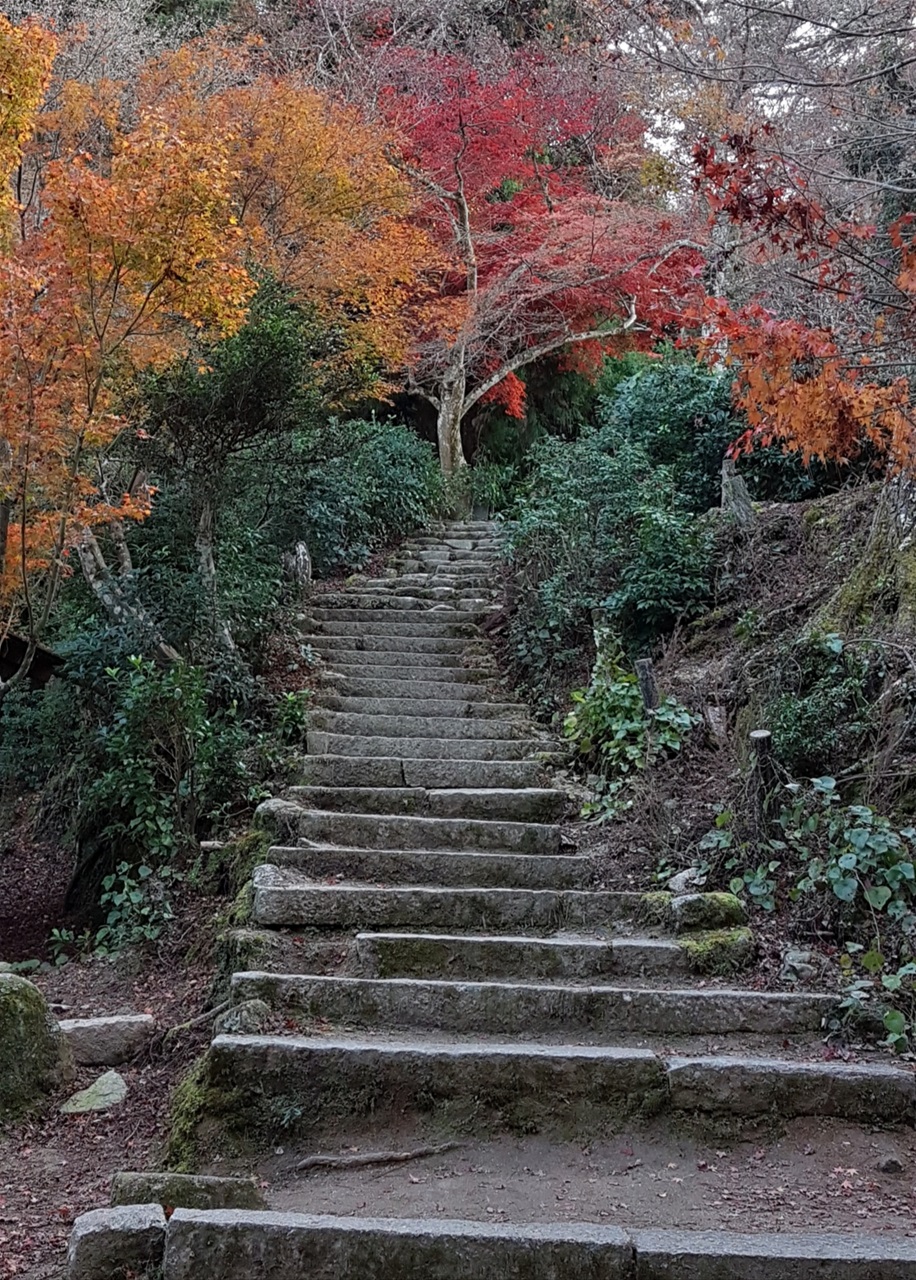
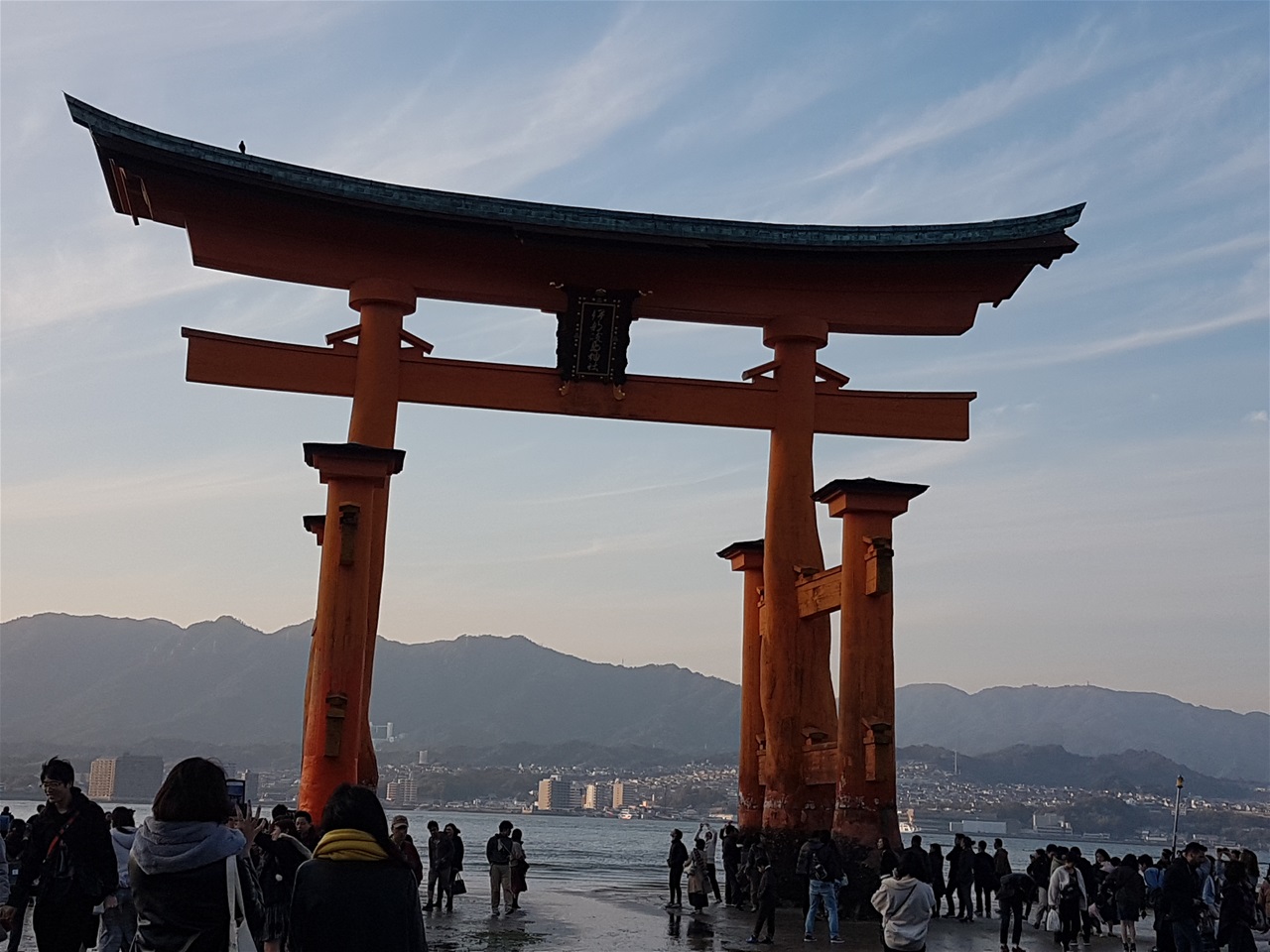
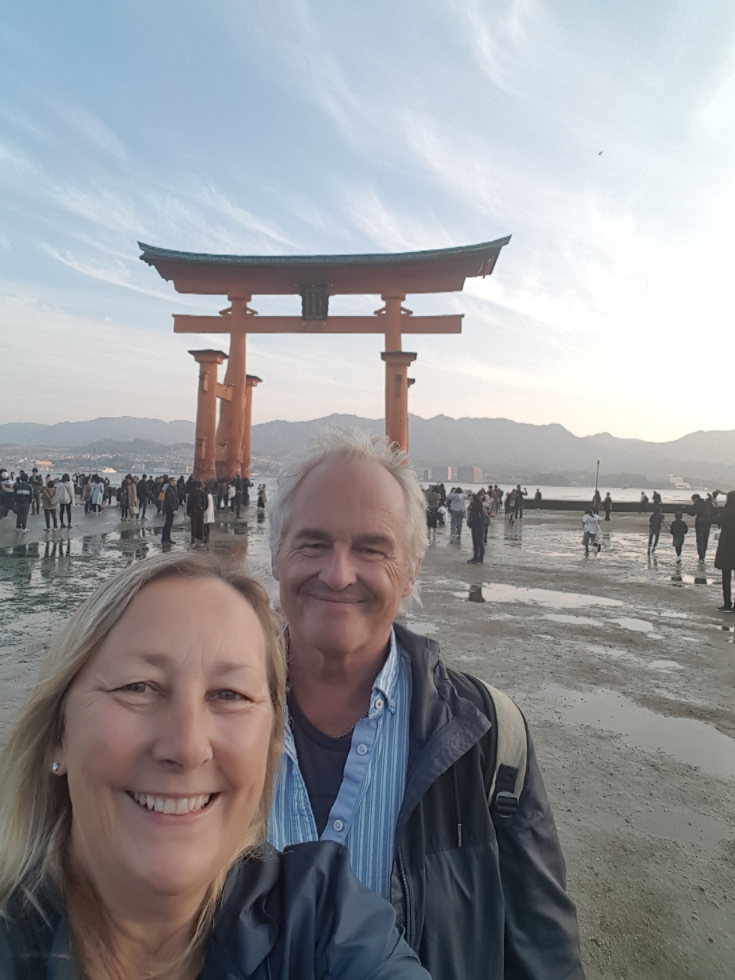

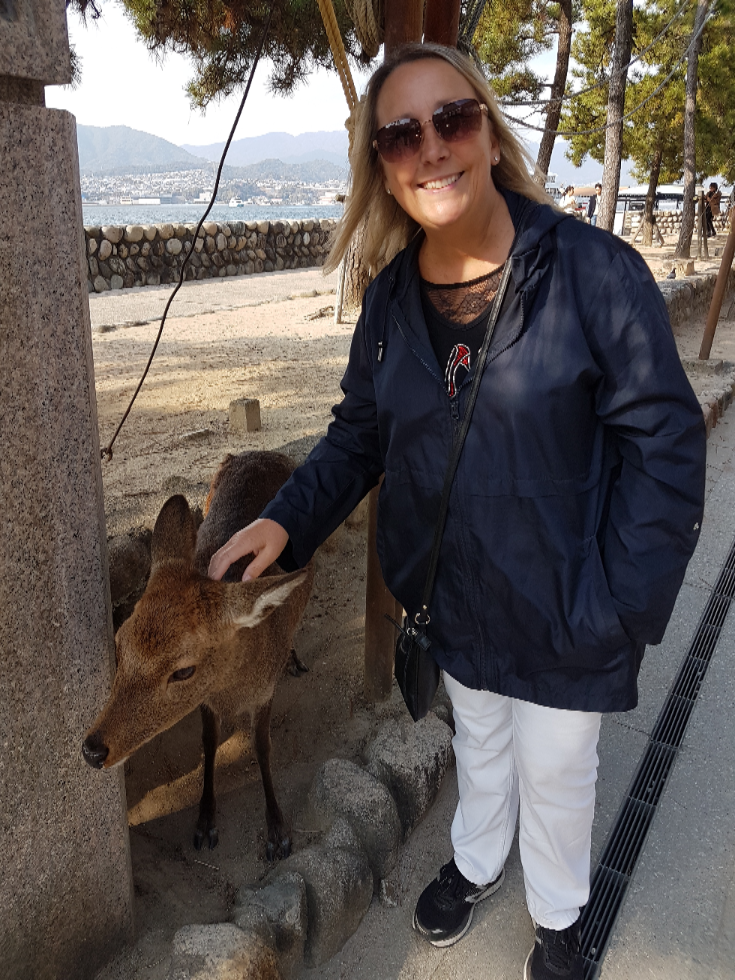
Latest comments